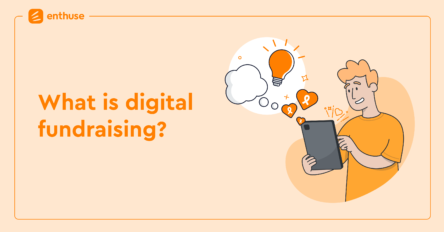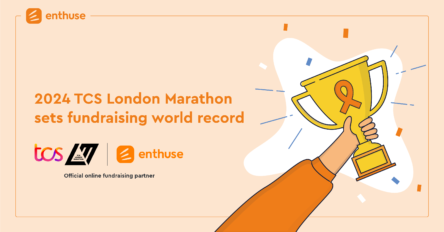
One of the most interesting insights from our Autumn Donor Pulse report, was the generosity of 18-24 year olds. The fact that 84% of this age group made a donation during lockdown provides some much needed positive news, amongst the challenges the third sector faces. This was such an arresting statistic that we decided to take a more detailed look at this age group.
Future of giving
Perhaps most importantly, the generosity Gen Z showed over the last few months was reflected in the likelihood of them giving in future. Whilst our research found all ages were likely to give more than pre-pandemic, it was 18-24 year olds that showed the biggest change. 50% of them stated they were now more likely to give in the future than they had been before Covid-19.
Our own data also showed the passion of 18–24 year olds to give. Over the period of lockdown, our data showed an overall increase of 180% in new donors. By far the fastest growing group was Gen Z with a rise of 700% in new donors from that bracket.
This bodes well for the long term with a generation growing up through Covid being more willing to help others. And while this younger age group may have less disposable income right now, their inclination to donate is something charities should factor into plans.
However, charities need to be mindful of gaining insights into Gen Z for stewardship. This is the age group they are likely to have least data on. Securing marketing opt-ins are an important route to understanding more about them.
Virtual engagement
One way charities can look to engage this enthusiasm is through virtual and hybrid events. While lockdown effectively wiped out physical events, it gave a boost to participation in virtual activities. These are now an important part of 2021 fundraising plans with an uncertain outlook for physical events.
While public participation in virtual events during lockdown was just over 1 in 10 overall this figure rose to nearly a third for 18-24 year olds. This participation may also have grown the number of donors from the younger age group, as they share their fundraising pages online across their networks of friends. People taking part in the virtual version of the London marathon may also help boost understanding of virtual events.
Pub quiz or a healthy run?
The types of virtual events people are interested in getting involved in vary widely, covering physical, social, wellbeing and creative. With pubs facing significant restrictions currently, it’s worth noting virtual quizzes were the most popular activities for 18-24 year olds. More than two fifths (41%) said they’d be happy to consider taking part to raise funds for charity. Whilst a marathon may be too far for many supporters, a third of Gen Z were interested in taking part in a 5K run.
If your charity is considering a virtual run, then it’s worth thinking about milestone-based challenges. An example of this would be an event where participants run a longer distance, like a half marathon and use a fitness tracker to mark major milestones. Two thirds (66%) of Gen Z showed an interest in events structured like this.
Choosing activities to fit your brand
There were also a significant number of 18-24 year olds interested in more introverted activities. These included activities like a reading challenge, giving up social media or even a sponsored silence. More than a fifth of Gen Z were interested in taking part in these, and were generally twice as likely to want to do it as the public overall.
The takeaway for charities is when planning a virtual running event, think about how this could be made more exciting for participants. For example, instead of asking people to do a 5K run, think about setting a target for all participants to run collectively – such as the distance of the coast of the UK.
The fact that 18-24 year olds are interested in everything from a virtual quiz to running underlines the breadth of virtual events that appeal to this age group. Charities have a lot of options to choose from and should consider how they can build fundraising campaigns around activities that fit well with their brand.
Online donating
Unsurprisingly, Gen Z led the way in online donating – 79% of their donations over the last few months were online. Though it is worth noting that even for 65–80 year olds, 44% of their donations were online in this period.
This underlines how critical it is for charities to have digital fundraising capabilities. It is not just something that younger age groups focus on, it has become a necessity for all age groups. The lockdown period will have started to instil behaviour change amongst donors and supporters, making digital a first port of call rather than a secondary route for older demographics.
This also means that ensuring your charity’s brand is strongly represented is critical. The younger the age group, the less likely a donor is to remember who they donated to online. 56% of Gen Z can’t remember the name of the charity they’ve donated to online in the last three months. This is a stark figure considering the hard work and resource put into charities’ brands.
In summary
18–24 year olds have already donated more often than other age groups. And they are planning to donate more often in the next three months. They are the most interested in virtual events, which will be critical to charities’ fundraising plans. But they are also the age group charities know least about. And they are the most likely to forget a charity’s brand when donating online.
This gives charities lots to think about for future plans. Marketing consent, virtual events and branding should be top of their to do list when thinking about Generation Generous.
To find out more about our latest donor research, download our Donor Pulse report.









